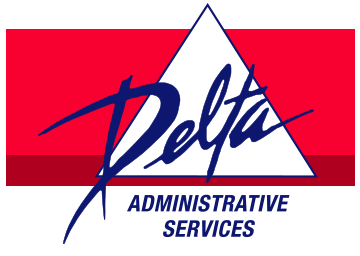As we approach the new year, it's crucial to stay informed about the latest developments…
COVID-19 Update December 22, 2020
The country breathed a collective sigh of relief last week when the first doses of the Pfizer-BioNtech COVID-19 vaccine were shipped out to all 50 states. Following shortly behind, the first doses of the Moderna vaccine were shipped out this week. This article addresses the likely considerations and guidance that will be used in determining the priority for distribution of the vaccine and provides steps employers can take now to prepare for the next steps on the roll-out.
Yesterday, Congress passed an omnibus spending bill that included $1.4 trillion to fund the federal government and $900 billion of additional COVID relief. The majority House vote was 399-53, and the Senate voted 92-6. The bill now heads to the White House, where President Trump is expected to sign it.
Tax Provisions
The omnibus spending bill – which is almost 5,600 pages long – contained many tax provisions that impact PEOs. Furthermore, the specific tax provisions of interest to all employers include:
- Paid Sick and Family Leave Credits
- Extends the paid sick and family leave credits against employment taxes from the Families First Coronavirus Response Act (FFCRA) for three additional months to March 31, 2021.
- The bill does not extend the FFCRA’s mandate to provide paid sick leave or paid family and medical leave beyond December 31, 2020.
- Changes to the Employee Retention Tax Credit (ERTC)
- Repeals the provision denying the ERTC to employers receiving a PPP loan. Instead, mechanisms would be created to prevent the same wages from being used for both PPP loan forgiveness and the ERTC.
- Extends the ERTC to apply to wages paid before July 1, 2021 (instead of January 1, 2021).
- Increases the credit percentage from 50 percent to 70 percent of applicable wages.
- Increases the per-employee limitation on applicable wages from $10,000 total to $10,000 per calendar quarter. In combination with the increased credit percentage, this would increase the maximum credit per employee from $5,000 to $7,000 per quarter (up to $14,000 for the first two quarters in 2021).
- The following language was added to the ERTC provisions that specifically addresses PEOs: Any forms, instructions, regulations, or guidance described in paragraph (2) shall require the customer to be responsible for the accounting of the credit and for any liability for improperly claimed credits and shall require the certified professional employer organization or other third-party payor to accurately report such tax credits based on the information provided by the customer. [Emphasis added.] It is not clear whether this provision applies retroactively or just to new credits taken in 2021.
- Makes the ERTC available if the business experienced a decline of at least 20 percent in gross receipts (instead of a 50 percent decline) as compared to the same calendar quarter in the prior year.
- Modifies the small employer definition of qualified wages to apply to employers that have 500 or fewer employees (instead of 100 of fewer employees).
- Creates a temporary employee retention credit of 40 percent of qualified wages up to $6,000 (maximum credit of $2,400 per eligible employee) for eligible employers affected by certain qualified disasters. This credit is retroactive and does not apply to COVID-related disasters.
- The bill also extends the Work Opportunity Tax Credit for five years.
In addition to the tax provisions, the COVID-19 relief portion of this legislation contains additional assistance for small businesses, which NAPEO has been lobbying Congress in support of. Specifically, it contains the following provisions designed to assist small businesses:
- Creates a second loan from the Paycheck Protection Program, called a “PPP second draw” loan for smaller and harder-hit businesses, with a maximum amount of $2 million.
- Creates a simplified application process for loans under $150,000.
- Expands the expenses that can be covered by a PPP loan.
- Makes 501(c)6 organizations that do not lobby eligible for PPP loans.
- Makes the expenses covered by PPP loans tax deductible.
More details on these provisions can be found in this document provided by the Community Banker’s Association.
Unemployment Insurance
The COVID-19 relief provisions also make the following changes to unemployment insurance:
- Unemployed individuals get an additional $300 per week from December 26, 2020 to March 14, 2021.
- Extends and phases out Pandemic Unemployment Assistance (PUA), a temporary federal program covering self-employed and gig workers, to March 14, 2021, and extends benefits from 39 to 50 weeks with all benefits ending April 5, 2021.
- Extends and phases out Pandemic Emergency Unemployment Compensation (PEUC) which provides additional weeks when state unemployment runs out, to March 14, 2021 (after which no new applications) through April 5, 2021.
- Extends provisions to March 14, 2021, including interest-free loans to the states.
No federal money was provided to shore up the shortfalls in state unemployment funds.
Miscellaneous Provisions
The omnibus spending bill contained so-called “tax extenders,” which are temporary provisions in the tax code that are designed to support specific economic activities. There are two provisions of interest to PEOs that have been extended for five years, including:
- The employer credit under section 45S for paid family and medical leave, originally enacted as part of tax reform in 2017.
- The expanded exclusion for employer-provided educational assistance, including student loan repayment benefits as enacted as part of the CARES Act. NAPEO has lobbied in support of this provision.
